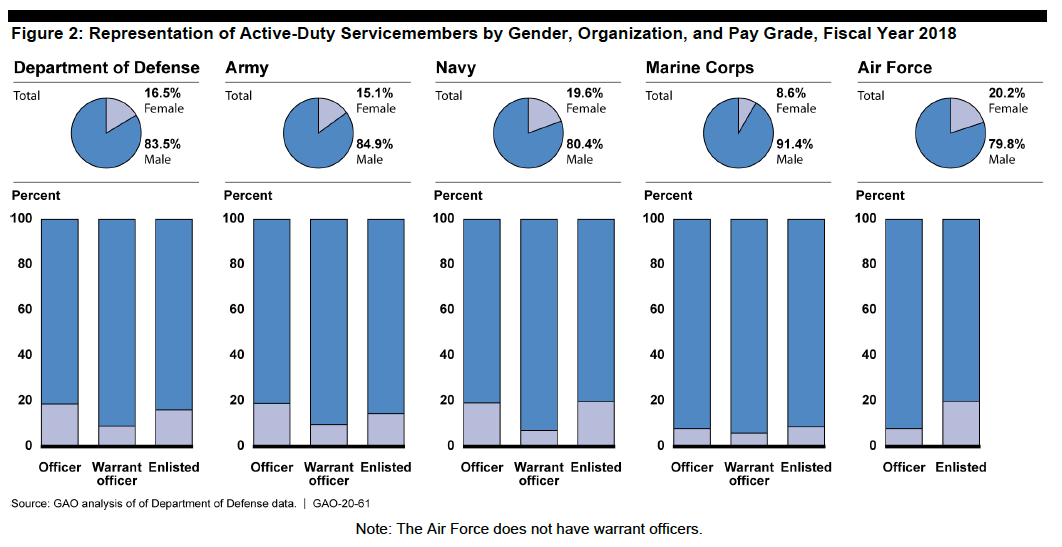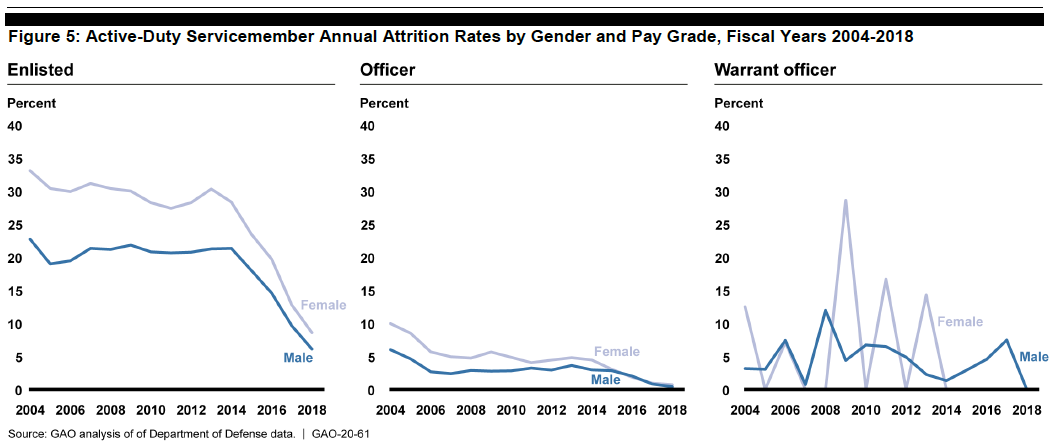
Family planning, lack of dependent care, sexism and sexual assault were among the top reasons more women leave the military than their male counterparts, according to a new report from the Government Accountability Office.
While the percentage of females serving in the military increased slightly between 2004 and 2018, during the same period, female enlisted and officers were 28 percent more likely to leave the service than men, according to a May Government Accountability Office report about female active-duty personnel.

The Department of Defense has recognized for years that increasing the gender diversity of its force relies first on bringing more female recruits into the service. The GAO report states that efforts to retain women need to be treated as equally critical to maintaining a diverse force.
“DoD has identified that female recruitment and retention is important to diversity in the military, but the services do not have plans that include goals, performance measures, or timeframes to guide and monitor current or future efforts to recruit and retain female active-duty service members,” the report states.
The Pentagon concurred with the GAO’s findings, stating it will continue to study the military’s recruiting and retention goals for female service members.
“While neither the Department of Defense nor the Military Services set recruitment, accession or retention goals based on race or gender, DoD will continue to study the dynamics of female recruitment, accession and retention,” reads a DoD response to GAO recommendations.
The GAO also found that fewer women remain in the military long-term, as compared to men. In general, after the first one to two tours, female enlisted and officer personnel start leaving the service at greater rates than men.
“The percentage of female active-duty service members tends to decrease at the 10-to-less-than-20 years of service category, and female active-duty service members are more likely to separate from the military than their male counterparts,” the GAO report states. “Moreover, from fiscal years 2004 through 2018, promotion rates for female active-duty servicemembers were slightly lower among the enlisted ranks in most years, but higher for officers as compared to their male counterparts.”
The report lists several reasons as contributing to why women leave the service earlier in their careers. Women from all branches stated family concerns were a top reason to leave early in their careers. For the Navy, the report states the rigidity and timing of some job requirements do not match up well with starting a family.
“Naval surface warfare tours—often occur at the time in a female active-duty servicemember’s life when she may try to become pregnant or have young children,” the report states.
The Navy recognized the rigidity of its job requirements was creating retention issues and, in 2018, unveiled some changes intended to retain officers. One change allows officers to take an approved break from service to do things such as start families and not have the break adversely affect their promotion potential.

The Navy has had a more challenging time dealing with another family concern: the availability of childcare. The Navy had 9,000 infants and toddlers on its waitlist for spots in on-base childcare facilities, USNI News reported in 2019. The Fiscal Year 2020 National Defense Authorization Act directed the Pentagon to study child care access. However, the Navy still had 9,000 infants and toddlers waiting for spots, Navy officials told lawmakers during a hearing in March. The Navy was even considering booting up to 1,000 children of Coast Guard service members from Navy facilities to free up spots for Navy families.
Across the military, the GAO report found female service members stated the decision to leave the service sooner in their careers often involved issues increased funding can’t fix. Repeatedly, females leaving the service stated there were few senior female enlisted and officer personnel to serve as mentors.
With fewer females in leadership roles, the report states women frequently stated the military was led by men who were not supportive of or understand family needs. The military was an organization where “they often faced sexism and the existence of an ‘old boy’s network,’ especially in career fields dominated by males.”





